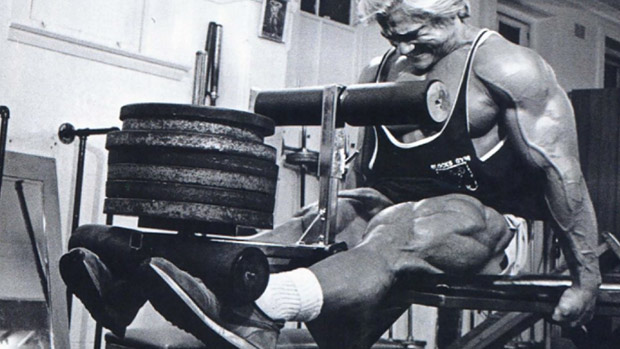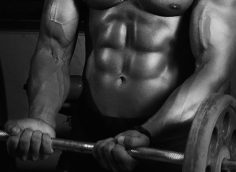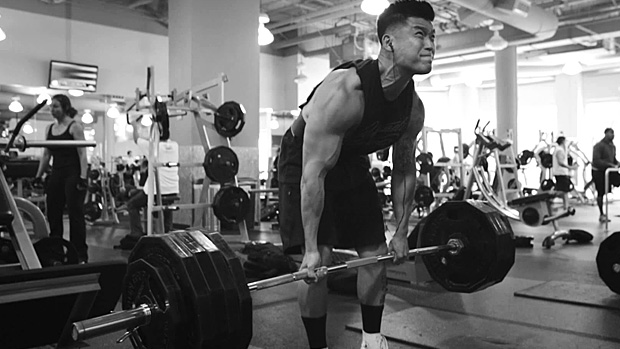I recently I had the honor of co-authoring a peer-reviewed and highly-referenced paper for an NSCA journal with biomedical engineering PhD student, Andrew Vigotsky. It's titled, "Are The Seated Leg Extension, Leg Curl, And Adduction Machine Exercises Non-Functional Or Risky?"
Many trainers and coaches argue that the knee extension places tensile forces on the anterior cruciate ligament (ACL) and patellofemoral joint (PFJ). They say these exercises can be considered dangerous and instead recommend exercises like squats.
In our paper, we demonstrated how this perspective is not only shallow, but is also logically inconsistent. Here are some key points on leg extensions from our article:
- Indeed, tensile forces are placed on the ACL during the knee extension exercise. However, when examining these forces, remember that they exist on a continuum, and injury is not a concern until a certain threshold is reached. For the ACL, this threshold has been reported to be upwards of 2,000 N, depending on an individual's age. So the tensile forces experienced by the ACL during the knee extension (158 – 396 N, using loads ranging from a dynamic 12 repetition-maximum to a maximum voluntary isometric effort) are less than one-fifth of its ultimate strength.
- ACL forces during the knee extension are less than or equal to many other "functional" tasks, such as walking or landing. Therefore, knee extensions do not appear to be any more unsafe for the ACL than what's required for everyday activity.
- The recommendation of the squat being a safer exercise for knee ligament health is also logically inconsistent. For example, one study suggests that posterior cruciate ligament (PCL) forces in the squat are about an order of magnitude, or ten-times greater than those placed on the ACL during the knee extension. To put this in perspective, the PCL:ACL ultimate strength ratio does not approach such a difference (10:1) and is closer to 1.5 – 2:1. Thus, many of the arguments against utilizing the knee extension in healthy populations out of concern for ACL health are unfounded and logically inconsistent.
- When it comes to the PFJ, speaking about forces is not enough. Instead, consider the stresses, as the force is distributed over a given area of tissue. Indeed, such comparisons have been made, and they suggest that bodyweight squats to 90° knee flexion elicit greater peak PFJ stress than EMG amplitude-matched knee extensions, especially with greater knee flexion. Nevertheless, if working with symptomatic individuals, exercise selection and range of motion should be tailored to the individual as per the recommendation of a physical therapist or medical professional; otherwise, the knee extension, like the squat, should not be considered universally contraindicated.
With that in mind, many trainers and coaches STILL think all you need are compound movements for a complete training program, and that seated or lying exercises designed to create a resistance challenge mostly on a single-joint action, such as many machine-based exercises, don't have a positive (functional) transfer into improving sports performance or reducing injury risk.
Well, when it comes to strengthening the quads, there's a multitude of studies showing better strength gains in the quads (even among post ACL reconstruction patients) when combining open-kinetic chain exercises like leg extensions along with closed-kinetic chain exercises like squats and lunges over using only closed-kinetic chain exercises.
Not to mention, the additional benefits of using single-joint exercises along with compound exercises has been highlighted in research on soccer players from two of the best premier-league division teams in Sweden.
Researchers divided 30 players into two groups: one group received additional specific hamstring training using the lying leg curl machine, and the other group did the same strength and conditioning programs without the additional specific hamstring training using the lying leg curl machine.
Results showed that the occurrence of hamstring strain injuries were clearly lower in the group (3 out of 15) that did additional specific hamstring training using the lying leg curl machine than in the control group (10 out of 15) that did not get the additional hamstring training. Additionally, compared to the group that wasn't prescribed lying leg curls, the group that received the addition of lying curl increased sprint speed.
- Cressey E. The Truth About Leg Extensions. T Nation, LLC. 2006.
- Vigotsky A et al. Are the Seated Leg Extension, Leg Curl, and Adduction Machine Exercises Non-Functional or Risky? NSCA Personal Training Quarterly 2017;4(4):50-53.
- Treubig D. Why You Should Be Using Knee Extensions After ACL Reconstruction. Modern Manual Therapy. 2018.
- Askling C et al. Hamstring injury occurrence in elite soccer players after preseason strength training with eccentric overload. Scand J Med Sci Sports. 2003 Aug;13(4):244-50. PubMed.





